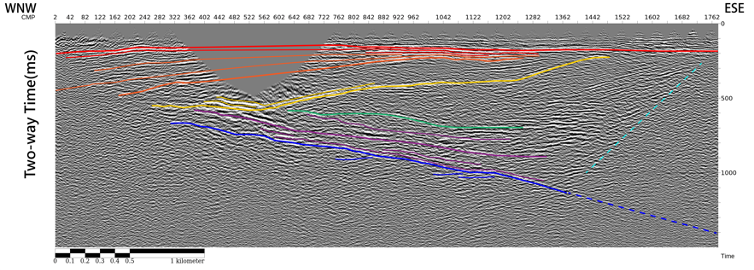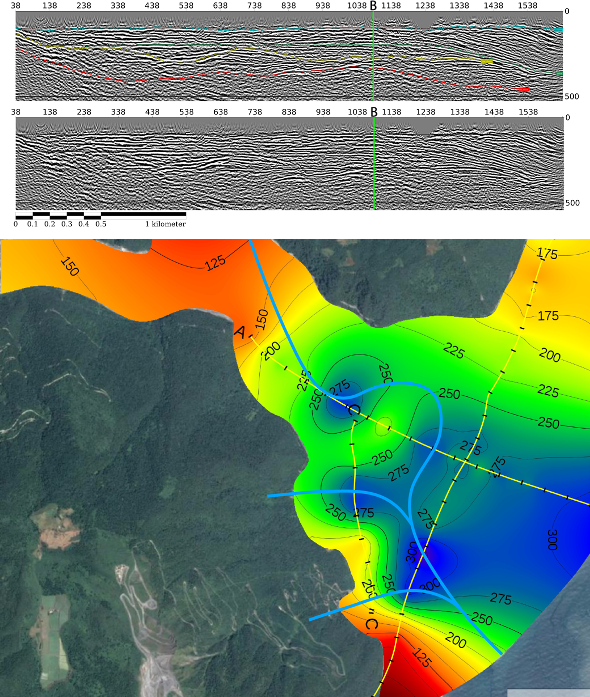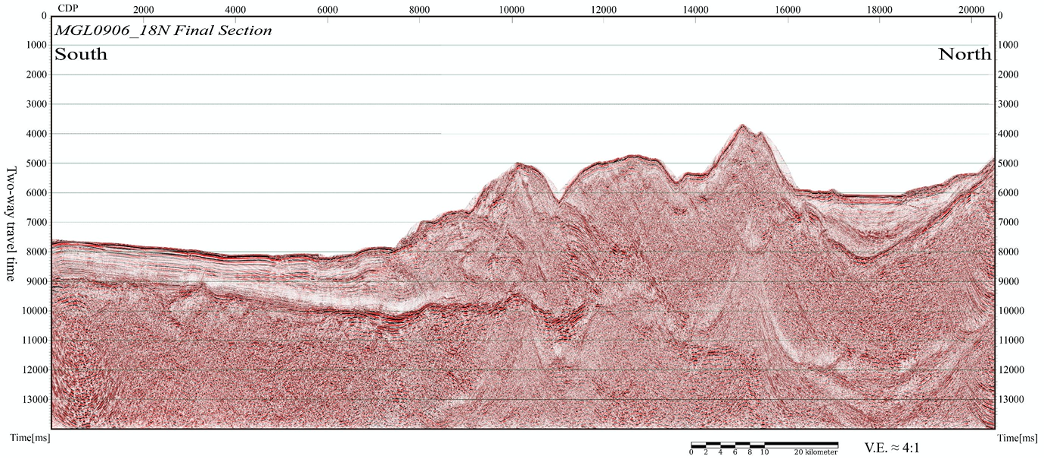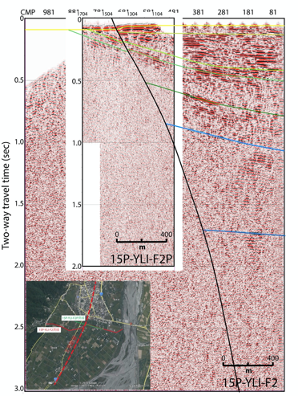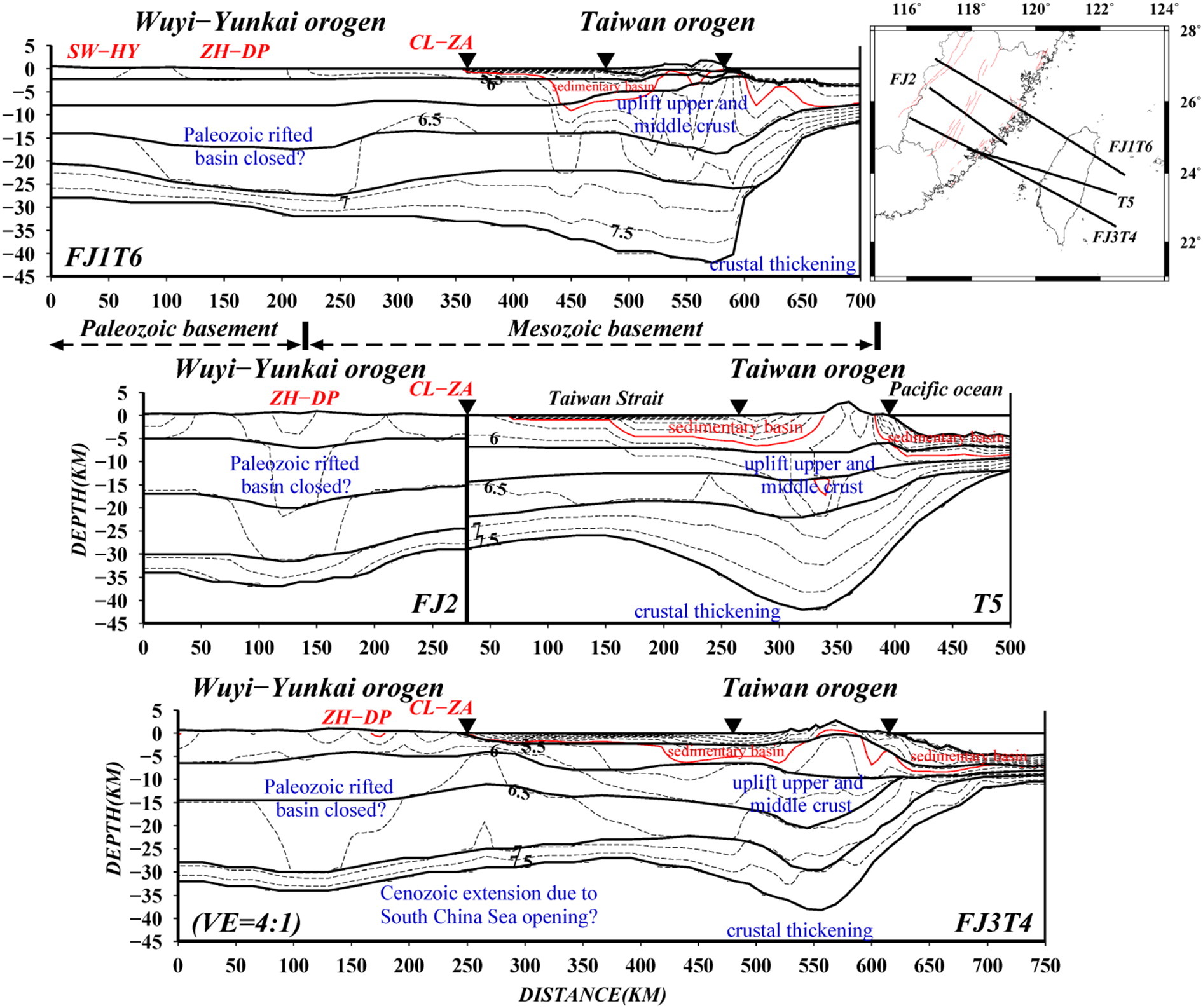Subsurface Structure Investigation of the Longitudinal Valley, Eastern Taiwan from High-Resolution Seismic Reflection Data
- The profile J north of the Peinanshan in Luyeh reveals the east-dipping Luyeh fault, and the undulations of the alluvium strata are observed as a result of the fault.
- The deformation and tilting of the sedimentary strata in the southern Longitudinal Valley is inferred to relate to the collision toward the northwest from the southern Costal Range and the reverse movement of active faults in the LV.
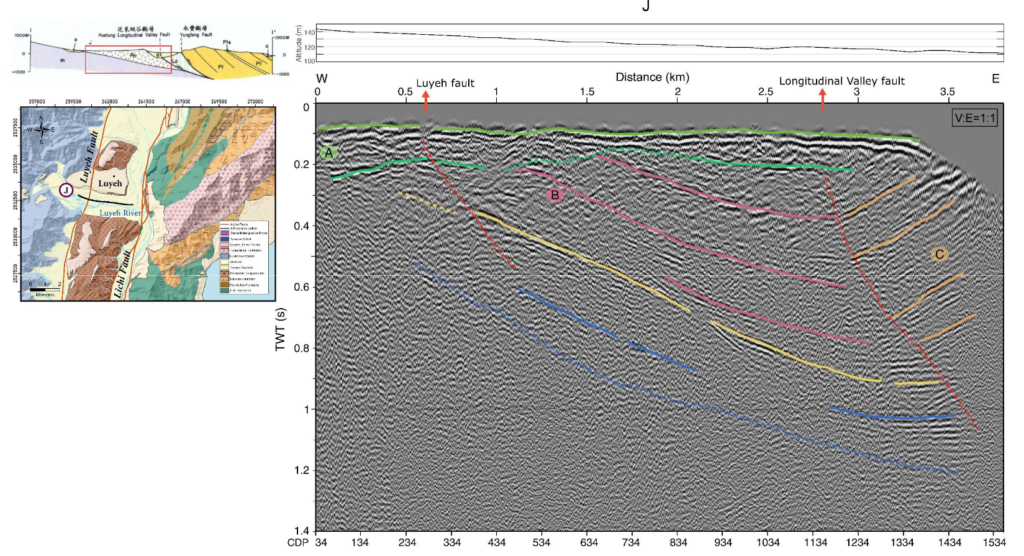
賴思穎 Szu-Ying Lai
碩士論文:應用高解析反射震測探討花東縱谷地下構造
Master’s Thesis: Subsurface Structure Investigation of the Longitudinal Valley, Eastern Taiwan from High-Resolution Seismic Reflection Data

